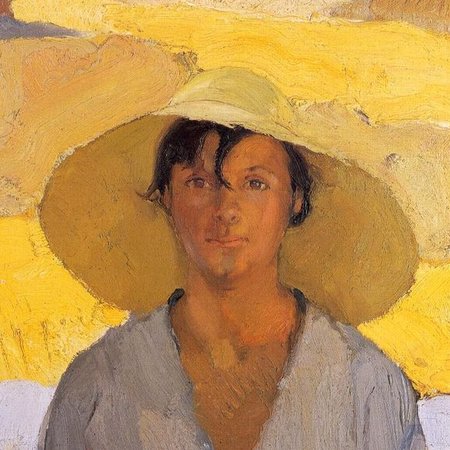Praxiteles (-330 - -400). Praxiteles of Athens, the son of Cephisodotus the Elder, was the most renowned of the Attic sculptors of the 4th century BC. He was the first to sculpt the nude female form in a life-size statue. While no indubitably attributable sculpture by Praxiteles is extant, numerous copies of his works have survived; several authors, including Pliny the Elder, wrote of his works; and coins engraved with silhouettes of his various famous statuary types from the period still exist. A supposed relationship between Praxiteles and his beautiful model, the Thespian courtesan Phryne, has inspired speculation and interpretation in works of art ranging from painting to comic opera to shadow play. Some writers have maintained that there were two sculptors of the name Praxiteles. One was a contemporary of Pheidias, and the other his more celebrated grandson. Though the repetition of the same name in every other generation is common in Greece, there is no certain evidence for either position. Accurate dates for Praxiteles are elusive, but it is likely that he was no longer working in the time of Alexander the Great, in the absence of evidence that Alexander employed Praxiteles, as he probably would have done. Pliny's date, 364 BC, is probably that of one of his most noted works. The subjects chosen by Praxiteles were either human beings or the dignified and less elderly deities such as Apollo, Hermes and Aphrodite rather than Zeus, Poseidon or Themis. Praxiteles and his school worked almost entirely in marble. At the time the marble quarries of Paros were at their best; nor could any marble be finer for the purposes of the sculptor than that of which the Hermes from Olympia was fashioned. Some of the statues of Praxiteles were coloured by the painter Nicias, and in the opinion of the sculptor they gained greatly by this treatment. In 1911, the Encyclopedia Britannica noted that Our knowledge of Praxiteles has received a great addition, and has been placed on a satisfactory basis, by the discovery at Olympia in 1877 of his statue of Hermes with the Infant Dionysus, a statue which has become famous throughout the world. Later opinions have varied, reaching a low with the sculptor Aristide Maillol, who railed, It's kitsch, it's frightful, it's sculpted in soap from Marseille. In 1948, Carl Blomel published it in a monograph as The Hermes of a Praxiteles, reversing his earlier opinion that it was a Roman copy, finding it not 4th century either but referring it instead to a Hellenistic sculptor, a younger Praxiteles of Pergamon. The sculpture was located where Pausanias had seen it in the late 2nd century AD. Hermes is represented in the act of carrying the child Dionysus to the nymphs who were charged with his rearing. The uplifted right arm is missing, but the possibility that the god holds out to the child a bunch of grapes to excite his desire would reduce the subject to a genre figure, C. Waldstein noted in 1882, remarking that Hermes looks past the child, the clearest and most manifest outward sign of inward dreaming. The statue is today exhibited at the Archaeological Museum of Olympia. Opposing arguments have been made that the statue is a copy by a Roman copyist, perhaps of a work by Praxiteles that the Romans had purloined. Mary Wallace suggested a 2nd-century date and a Pergamene origin on the basis of the sandal type. Other assertions have been attempted by scholars to prove the origins of the statue on the basis of the unfinished back, the appearance of the drapery, and the technique used with the drilling of the hair; however scholars cannot conclusively use any of these arguments to their advantage because exceptions exist in both Roman and Greek sculpture. Other works that appear to be copies of Praxiteles' sculpture express the same gracefulness in repose and indefinable charm as the 'Hermes and Infant Dionysus'. Among the most notable of these are the Apollo Sauroktonos, or the lizard-slayer, which portrays a youth leaning against a tree and idly striking with an arrow at a lizard. Several Roman copies from the 1st century are known including those at the Louvre Museum, the Vatican Museums, and the National Museums Liverpool. Also, the Aphrodite of Cnidus at the Vatican Museums is a copy of the statue made by Praxiteles for the people of Cnidus, and by them valued so highly that they refused to sell it to King Nicomedes in exchange for discharging the city's enormous debt. On June 22, 2004, the Cleveland Museum of Art, announced the acquisition of an ancient bronze sculpture of Apollo Sauroktonos.
more...





